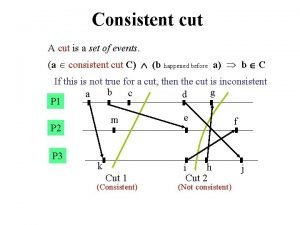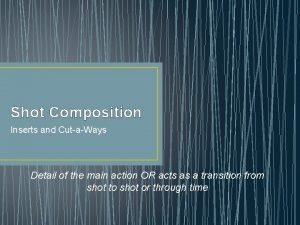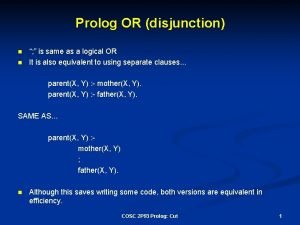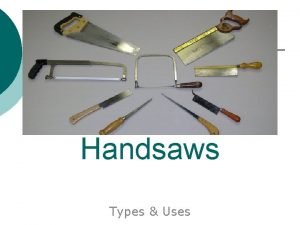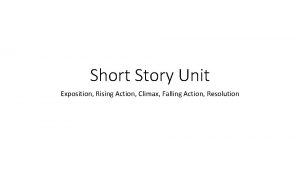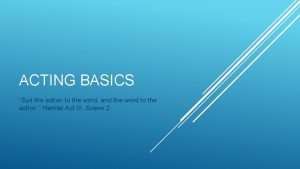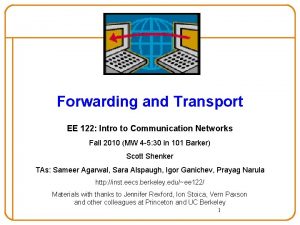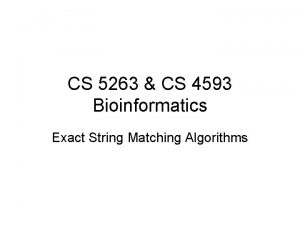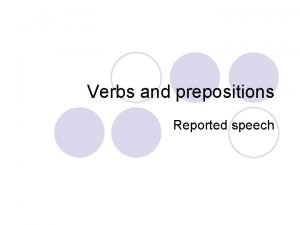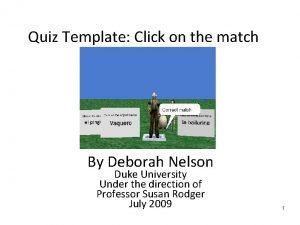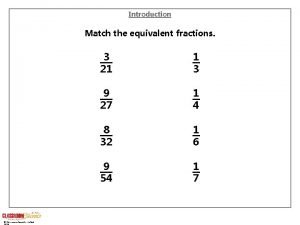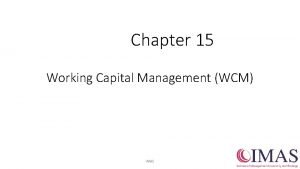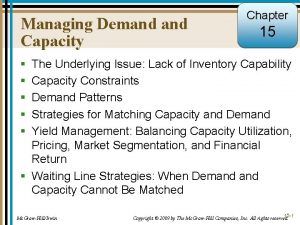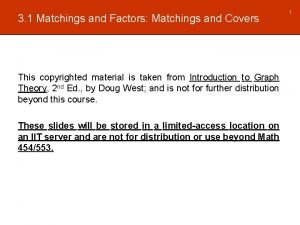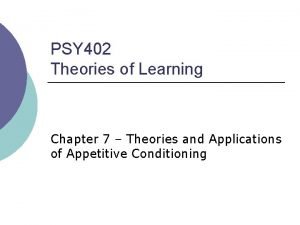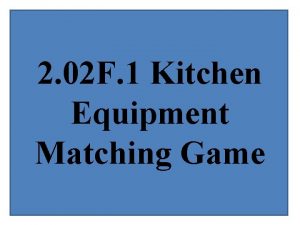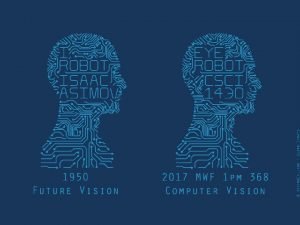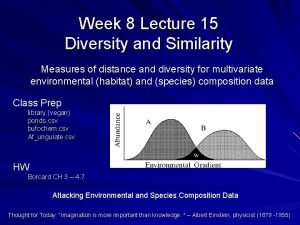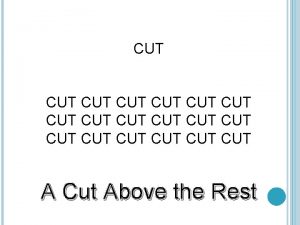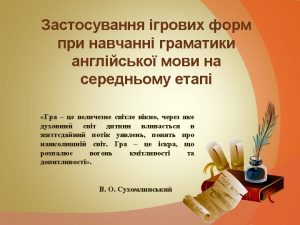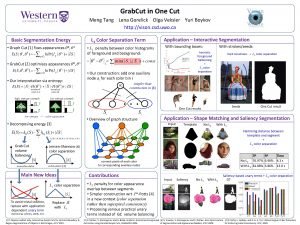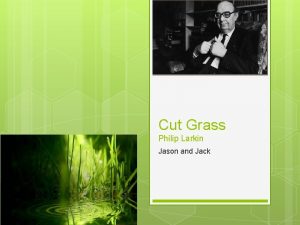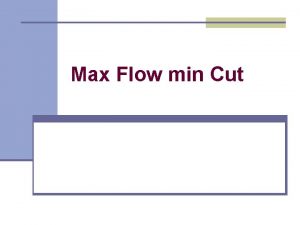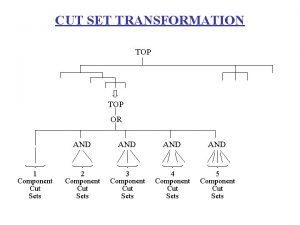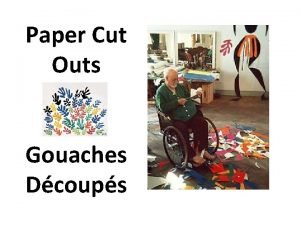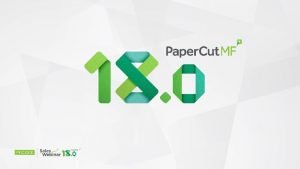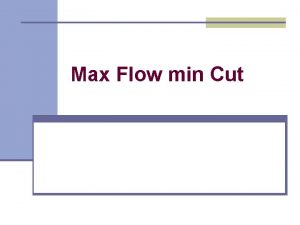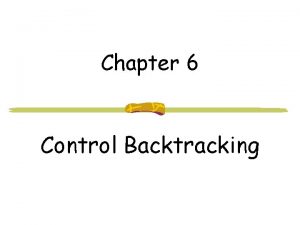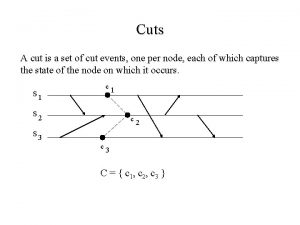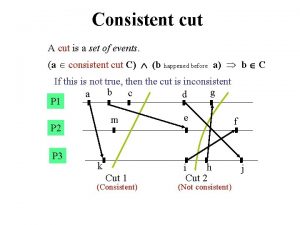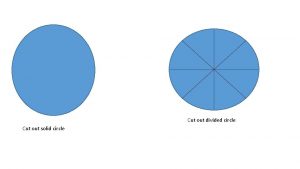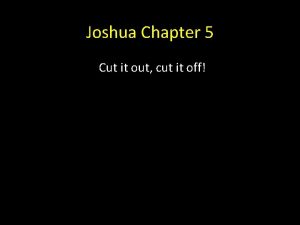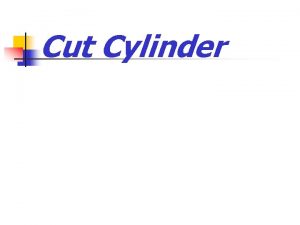J CUT L CUT Matching action Matching action

































- Slides: 33


J CUT

L CUT

Matching action • Matching action – Matching actors’ hand positions, use of props, eyeline and stage position from one cut to another fall into the technical category of how to make a proper edit. • The greatest weight is given to whether that cut drives the emotion of the scene or moves the story along. • The audience will often ignore many minor continuity differences from one shot to the next if they stay totally engrossed in the story. Your job as the editor is to cut in such as way that they do.

Non-Linear Editing • Allows access to any clip without scrubbing through entire clips • Film was the first nonlinear editing system • Linear editing refers to tape-to-tape editing

Workflow

Editing Software • Is only making references to clips on your hard drive. The clips are not actually there in the software program. That means that if you move your clips around or delete them off of your hard drive—you will offline your media.

Premiere Pro and Cache Files • Cache: A cache (pronounced CASH) is a place to store something temporarily in a computing environment. • In computing, active data is often cached to shorten data access times

Premiere Pro and Cache Files • You can pretty much throw anything on the Premiere Pro Timeline and it will just work • When you import your camera native files (say some. MTS files) Premiere will start to ‘conform’ those files getting them ready to play back. • creates a cache of all those conformed previews in a folder on your boot drive where it ends up taking up a lot of disk space • You can move the media cache folder to your media storage drive

Audio Waveform in Premiere

Wavelength The distance between any point on a wave and the equivalent point on the next phase. Literally, the length of the wave.

Amplitude: The strength or power of a wave signal. The "height" of a wave when viewed as a graph. Higher amplitudes are interpreted as a higher volume, hence the name "amplifier" for a device that increases amplitude.

Frequency: The number of times the wavelength occurs in one second. Measured in kilohertz (Khz), or cycles per second. The faster the sound source vibrates, the higher the frequency. Higher frequencies are interpreted as a higher pitch. For example, when you sing in a highpitched voice you are forcing your vocal chords to vibrate quickly.

Sound Levels • On old analog recorders 0 d. B was 14 decibels higher than it is on many professional audio recorders • on magnetic tape and could push the recording level past the 0 d. B setting on a regular basis without any serious consequences.

Digital audio has a hard ceiling that is measured as 0 d. B When you push the audio level beyond that point, digital clipping occurs. This produces nasty distortion that effectively ruins your recording during the clipping. To avoid digital clipping, it's good practice to keep your recording levels well below the ceiling. A common setting is 10 d. BFS. This gives you some headroom for inevitable peaks and still keeps the signal loud enough to avoid noise. Many devices also include a signal limiter of some kind.

Levels • • Total audio mix level: -3 d. B to -6 d. B Principle speaker (SOT) audio: -6 d. B to -12 d. B Sound effects audio: -12 d. B to -18 d. B Music when its an underscore: -18 d. B

Wide or Establishing • Shows your subject within context

Overlapping Action • The important thing to remember is that the last action of the first shot has to be repeated at the beginning of the second shot • You have to shoot the same movement twice


• If you cut from one size image to another you can create a jump cut but changing the angle at least 45 degrees can make a smooth transition

Cutting on Action • You have to make sure that you overlap action while shooting--Sometimes overlapping is necessary When editing as well

Crossing The Line • You can cross the line if you show the crossing with a camera move or if you stop on it

Here the reference gives the viewer orientation

Crossing the line • by cutting on action

• Same background • subjects arranged for less distraction

Continuity Cut Fade in Fade out Dissolve Graphic Match

Signal to Noise Ratio

Handheld Microphones

Lavalier Mics The most commonly used self-worn microphones in a broadcast environment would be lavalier (or lapel) microphones, and headset microphones. They are designed to be small, discreet, positioned extremely close to your sound source and plug into a variety of devices such as wireless belt packs, or direct to your camera.

The Shotgun Microphone

Microphone Pickup Patterns

DYNAMIC VS CONDENSER • • Dynamic Mic Advantages Condenser Mic Advantages Rugged More Sensitive Lower Cost Better Audio Quality No Power Required Can Be Extremely Small • Dynamic Mic Disadvantages • Condenser Mic Disadvantages • Lower Sensitivity and Power Output • Higher self-noise • Larger and Heavier • More Fragile • Slower Response Time • More Expensive • Not the Best Choice for Maximum Audio Quality • Prone to Weather Problems and RF Interference

Positives and Negatives POSITIVES • On-camera mics are compact, lightweight, affordable, and feature universal connections such as a standard hot-shoe mount, and 3. 5 mm microphone jack, which makes them compatible with most DSLR cameras and camcorders on the market. NEGATIVES • As these microphones sit on top of your camera, this may not always give you the optimum signal to noise ratio. If your subject is close enough to the camera (roughly two meters or seven feet) or you’re simply recording the ambience of your environment, these microphones are perfect. For anything further away, you may achieve better results by getting your mic closer to your source using one of the following two microphone types.
 Consistent cut
Consistent cut Cutaway shot film
Cutaway shot film Prolog disjunction
Prolog disjunction Crosscut vs rip cut
Crosscut vs rip cut What are plot stages
What are plot stages The black cat exposition
The black cat exposition Medias.res
Medias.res Suit the action to the word the word to the action meaning
Suit the action to the word the word to the action meaning Exposition story elements
Exposition story elements Student intervention matching form
Student intervention matching form Patient matching algorithm
Patient matching algorithm Feature matching
Feature matching Prefix matching
Prefix matching String matching
String matching Reported speech already
Reported speech already Major cross match
Major cross match Matching quiz template
Matching quiz template Match the equivalent fractions
Match the equivalent fractions Cengage chapter 4 answers
Cengage chapter 4 answers Peter and the wolf instruments
Peter and the wolf instruments Blood compatibility
Blood compatibility Minutiae matching matlab code
Minutiae matching matlab code Matching hypothesis
Matching hypothesis Tree matching
Tree matching Maturity matching working capital financing policy
Maturity matching working capital financing policy Tactics for matching capacity to demand
Tactics for matching capacity to demand Matching cover
Matching cover Visual pathway psychology
Visual pathway psychology Matching hypothesis
Matching hypothesis Response deprivation theory
Response deprivation theory Kitchen matching game
Kitchen matching game Matching capital
Matching capital Feature
Feature Russell rao distance
Russell rao distance
